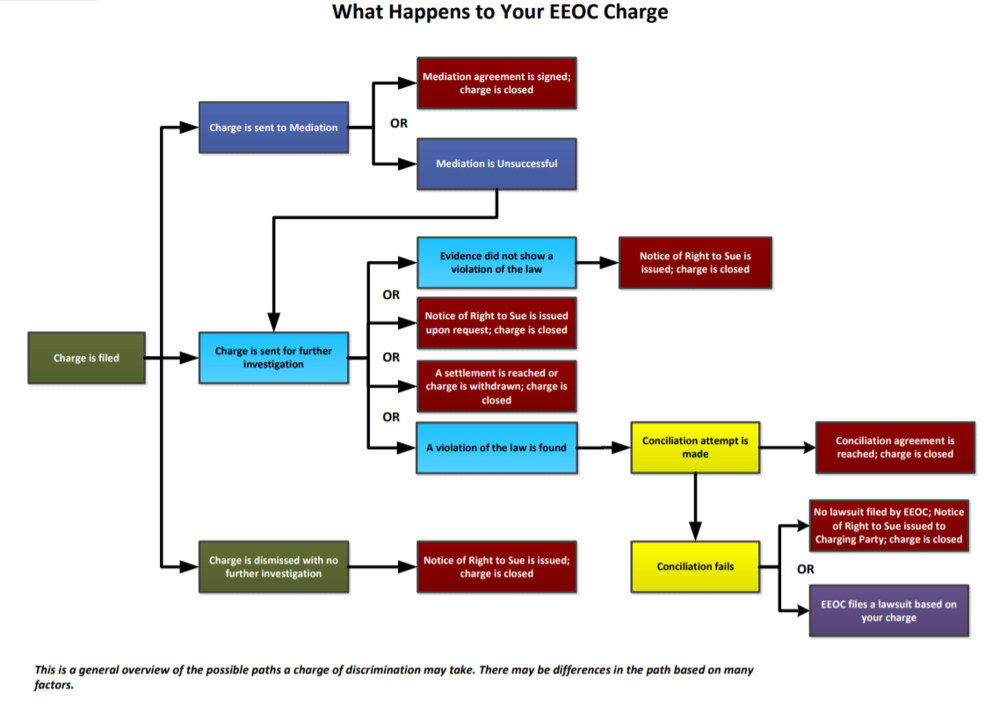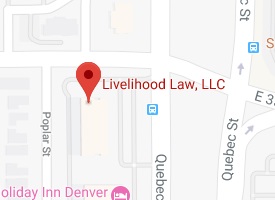More often than not, the EEOC (Equal Employment Opportunity Commission) will issue a decision that it was unable to conclude whether discrimination occurred and issues a Right to Sue. When this happens, do not give up hope for your case. If you are working with an attorney, they will have determined the true strength of you claim and will be able to advise you on what to do once you get a Right to Sue.
The EEOC Process Can Take Years To Complete.
The EEOC has systems in place to process complaints that come in, but they do not have unlimited resources. It is not uncommon for a complaint to sit at the EEOC for two years before a determination is made.
Submitting a Charge to the EEOC
First, the Charging Party (the employee) must file a Charge of Discrimination (“Charge”) within 300 days of the discriminatory acts. The Charge contains examples of the discriminatory acts and provides the applicable federal laws.
Mediation
After a Charge is filed, the EEOC may contact the employee and the employer to ask if they are interested in mediation. Since the EEOC does not require mediation, there is no need to worry if you are not contacted. Mediation is a voluntary, informal process available to resolve the issues presented in the Charge. If both parties agree to mediation, a confidential agreement may be reached with the assistance of a mediator. When one or both parties turns down mediation, the Charge is forwarded to an investigator. The investigation process also begins if no agreement is reached during the mediation. In our experience, many cases are resolved outside the EEOC process with the assistance of legal counsel.
The Position Statement and Rebuttal
Once the Charge is received, the EEOC provides the employer with a copy of the Charge and assigns an EEOC Investigator to the matter. At this point, the employer has the opportunity to respond to the Charge in a written Position Statement. It can take months after the original filing for the employer to submit a Position Statement. In this statement the employer typically provides their own version of the facts. You can respond to the Position Statement in a written response called the Rebuttal. The Rebuttal is an opportunity for you to expand on your personal experience of discrimination or retaliation with additional facts and provide a legal analysis of all the claims. Having legal counsel at this time is in your best interest because the Charging Party is able to submit a Rebuttal with relevant case law and to organize all the legally significant facts.
The EEOC Investigation
The next step is for the EEOC Investigator to review the information. The EEOC Investigator has 180 days to complete their investigation from the date that the Charge is filed. However, the investigation may be extended by another 180 days in certain circumstances. It is not unusual for the EEOC Investigator to ask the parties for an extension. The EEOC Investigator may seek additional information through witness interviews, or by speaking to the Charging Party or employer. Once the investigation is complete, the EEOC will issue a decision.
Typical Outcomes Of The Investigation
Generally, the EEOC Investigator will make one of three determinations:
1. The EEOC is unable to conclude there is reasonable cause to believe that discrimination occurred. The Charging Party is provided a Dismissal and Notice of Rights. The Charging Party has 90 days to file a lawsuit if she or he wishes to proceed.
2. The EEOC determines there is reasonable cause to believe discrimination occurred. Both parties received a Letter or Determination inviting them to resolve the Charge through an informal process known as Conciliation.
3. When Conciliation is unsuccessful and the EEOC decides not to litigate, the Charging Party will receive a Notice of Right to Sue. The Charging Party has 90 days to file a lawsuit.
What To Do If You Are Involved With The EEOC
If you are involved in the EEOC process without legal representation, do not wait to contact an attorney. Our firm will discuss your rights and the strengths of the claims you wish to pursue. Contact us here to set up an initial consultation.
Helpful Flow Chart
Here is a flowchart of the EEOC process that can be found on the EEOC’s website: https://www.eeoc.gov/employees/upload/charge_status_flow_chart.pdf



